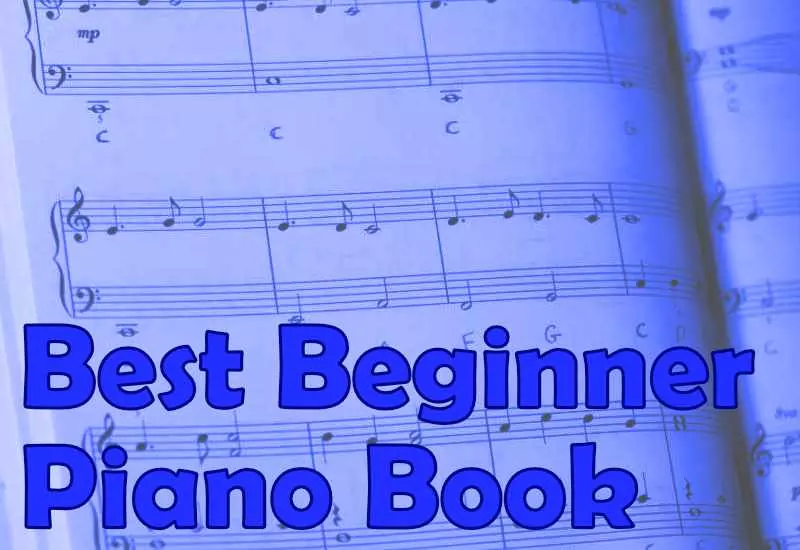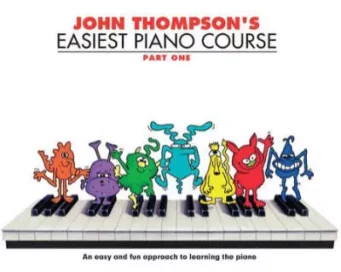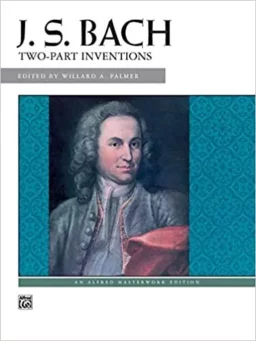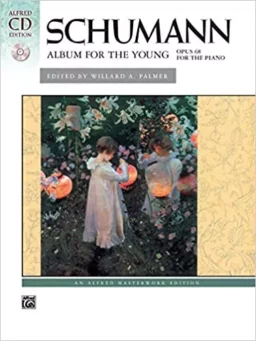Best Beginner Piano Book for Children

Contents
Choosing the best piano book for beginners can indeed be tricky since there are lots of books available out there. Buying all these piano books and trying them all is one way to compare them and know what could work best—but worry no more because we’re here to do that for you and help you out!
There are lots of things that you can consider when choosing the best beginner piano book—depending on the teaching style and age. With that in mind, we have narrowed down your choices to two (for children), and one (for adults), along with the reasons why they are the best beginner piano books there are!
What to Look for in a Best Beginner Piano Book
For children ages 5 years old and up, there are 3 things to consider in choosing the best beginner piano book:
-
Level of difficulty
Since these beginner books are for children, it’s advisable that the books need to start with finger numbers, as it is a way to make things easier and explain to children where to put their fingers. Books with easy-to-learn approaches and demonstrations will lead them to a great start!
-
Print
Quality and size of the print are equally essential as well in choosing a beginner piano book for your child. Books that have colorful and bigger prints are what children enjoy most since they can learn better from them. When teaching someone who’s never had piano lessons before, the prints must be big, so they could read the notes and the instructions properly, and learn effectively. As a beginner, the last thing you want for your child is trying to read small notes.
-
Content songs
There are several reasons why one wants to learn how to play the piano. It could be for self-esteem, discipline, brain and memory development—and many more. But for children, one reason is that they enjoy hearing the music and playing it. With the right, inspiring, and enjoyable songs, children will have fun, and face learning with such eagerness and determination. They will be motivated to learn because they want to play songs that they find amusing so much that they can’t wait but to learn every lesson with persistence and excitement.
These 3 things are among the main factors why the following beginner piano books are the best for children:
-
All-in-One Piano Lessons (Hal Leonard Student Piano Library)
When it comes to the level of difficulty, All-in-One Piano Lessons is a book that is definitely easy to learn. It starts with finger numbers and two black keys, which makes it very easy to understand and teach. Children can even read and study it by themselves if they want. This will not be a problem, since the illustrations and prints are understandable and big, so children won’t have a hard time figuring out what to do.
The prints are colorful, and there are fun activities to do—from tracing crochet and minim rests, to circling rhythms they hear, this is a great way to enjoy and test their learnings at the same time.
Songs in this book, like Merrily We’re Off to School, and Let’s Get Silly, for example, are also nice and fun. Students can also draw some notes, and even try to come up with their own song in the My Own Song section of the book, where they can make use of what they have learned and also have some fun!
If you’re interested in buying All-in-One Piano Lessons Book A or All-in-One Piano Lessons Book B, you can purchase from Amazon.
-
Easiest Piano Course by John Thompson
John Thompson’s Easiest Piano Course is one of the most popular piano books for beginners. It features little monsters of different colors that teach children all the lessons, which they really loved! They also like to look at these little monsters and try to figure out what they’re doing. The drawings are nice and colorful, and the notations are big, which makes it easier for the children to read and put notes in.
This can be a supplemental book for All-in-One Piano Lessons, since the children should start first on finger numbers, before they can proceed to where the Easiest Piano Course starts, which is reading middle C. This book teaches children about hands together and notations starting from lesson 1. The good thing about it is that this will help them learn basic note values and coordinate hands together quickly. It also comes with worksheets and a few finger drills.
Aside from that, there are also nice accompaniments that can make any boring-sounding song sound groovy and nice! Even though this series has 8 levels in total, the first two books are the only ones that are good for learning the basics, and the next ones are actually dry and outdated, so you might want to switch to a different book for an intermediate level.
If you’re interested in buying Thompson’s Easiest Piano Course, Amazon offers a great price.
Best Beginner Piano Book for Adults
-
It’s Never Too Late to Play Piano by Pam Wedgwood
Similar to what the title suggests, if you’re an adult who wants to start from scratch, It’s Never Too Late to Play Piano is the perfect book for you to get you started. This book goes on at a pace that will include all the basics you need to learn. It starts at one note, recognizing each and teaching you how to count, and then it leads you to start playing using the right hand, and then the left hand separately—then playing with both hands together.
Once you learn to coordinate hands together, the book will then start to advance at a quicker pace, but since the book has qualities that make it easier to understand, you will do just fine. By the end of the book, you’ll see that you’ve acquired a deeper knowledge and understanding, your hands already got used to the piano keys and it has expanded a lot more, and lastly, you’re ready to face a new level of difficulty.
If you’re interested in buying Wedgwood’s It’s Never Too Late To Play Piano, here’s the link on Amazon.
Best Beginner Piano Book for Intermediate Players
Congratulations! You’ve passed the beginner level, and you’re now ready to be on the next one, which is intermediate. Being an intermediate player is fun since you get the chance to play more songs that are in original form compared to the simplified ones you get to play while you’re on the beginner level. It also opens opportunities for learning more knowledge and techniques, as well as expanding your skill.
Now, choosing the best piano book for intermediate players can be hard since now that you’re an intermediate, there are a lot more choices. To help you on your piano journey, we have narrowed down your choice of the best piano book for intermediate players into two, which work best for both children and adults:
-
J.S. Bach Two-Part Inventions
Undoubtedly, Bach’s pieces are some of the most fun and easiest to play for a beginner, and are also helpful in teaching enhanced coordination. However, when you’re a beginner, there are only limited pieces that you can play. As you learn more and hone your skills as an intermediate, you’ll be able to play a lot more.
Bach Two-Part Inventions is a great way to start! This piano book is mainly a collection of 15 inventions—composed of two separate melodies, one in each hand. Some of the inventions that you’ll see in this book are in c major, c minor, d major and d minor. Since there are separate melodies in each hand, it stimulates your brain when playing multiple voices all at once. This is also beneficial for finger coordination, and sight-reading as well.
Bach Two-Part Inventions is available in the public domain as pdf, but if you’re interested in buying the printed version, purchase Johan Sebastian Bach Two-Part Inventions from Amazon.
-
Robert Schumann Album for The Young Op. 68
This book is a collection of Schumann’s 43 short piano pieces that you can work and practice on from the beginner stage up to intermediate. This is one of the best intermediate piano books because the pieces here are progressive, ranging from grade 1 to grades 5 and 6. The first few pieces are easy for intermediate players, and it gets more complicated as you turn pages. It also has lots of nice pieces and technical exercises that can be played by both adults and children on the intermediate level.
Fun Fact: Robert Schumann wrote the 43 short piano pieces in this book for his 3 daughters because he was dissatisfied with the available practice
Robert’s work is available in the public domain as pdf, but if you’re interested in buying the printed version, purchase Robert Schumann Album for The Young Op. 68 on Amazon
You’ve already come a long way and will continue improving as you go on with these piano books. Each of them will help you grow as a pianist. You can combine technical studies and sonatas for your development and improvement in getting to the advanced level. Most importantly, it’s the persistence and determination to learn that matter most! Practice makes perfect, and soon enough, you’ll be able to play even the hardest piece that seems impossible when you were still on the beginner level.
Since you’ve stayed until the end, here’s an inspiring quote for you!
I worked hard. Anyone who works as hard as I did can achieve the same results. – Johannes Sebastian Bach
Parents, Teachers & Sheet Music Seekers:
If I offered to provide you hundreds of legit sheet music PDFs for your kids:
- Brand-New & Exclusive Compositions
- Age & Level Appropriate
- With INSTANT Online Access
- Worry-FREE Licensing & Copyright
...would you take me up on that offer?
ABOUT
I started Music4Kids with a simple goal in mind: To provide valuable information to guiding parents who want to raise musically inclined kids.
Click to read on




